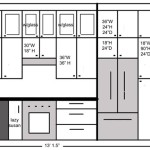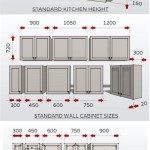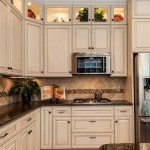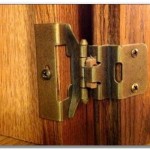## Essential Considerations for Choosing the Perfect LED Light for Kitchen Cabinets
Upgrading your kitchen's lighting with LED lights can transform both the functionality and aesthetics of the space. When it comes to illuminating your cabinets, there are key factors to consider to ensure optimal results.
### 1. Brightness and Color TemperatureThe brightness of your LED lights, measured in lumens, will determine how well they illuminate the interior of your cabinets. For ample task lighting, aim for around 300-500 lumens per foot of cabinetry. The color temperature, expressed in Kelvin, plays a crucial role in creating the desired ambiance. Warm white LEDs (2700-3000K) cast a cozy glow, while cool white LEDs (4000-5000K) provide a brighter, more energetic light.
### 2. Beam AngleThe beam angle refers to the spread of light emitted by the LED. For focused task lighting inside cabinets, choose a narrow beam angle (20-30 degrees). A wider beam angle (60-90 degrees) is more suitable for general illumination or accent lighting in display cases.
### 3. Color Rendering Index (CRI)The CRI measures how accurately the LED light reproduces colors. A CRI value of 90 or higher ensures that colors appear natural and vibrant, while a lower CRI may result in distorted hues. For kitchens where food preparation and presentation are paramount, a high CRI is essential.
### 4. Power Consumption and LifespanLED lights are renowned for their energy efficiency, consuming significantly less power than traditional halogen or fluorescent bulbs. They also boast exceptional lifespans, typically lasting for over 50,000 hours. This translates to reduced maintenance costs and a more sustainable lighting solution.
### 5. Installation OptionsDepending on the design of your cabinets, there are different installation methods available. Under-cabinet lights can be mounted on the underside of cabinets, providing direct illumination. Puck lights are small, recessed lights installed inside cabinets, offering a more diffused effect. Consider your cabinet construction and the level of illumination you desire when choosing an installation option.
### 6. Smart Control and CustomizationModern LED lighting systems offer advanced features such as smart control through apps or voice assistants. With these capabilities, you can remotely adjust brightness, change color temperatures, and create lighting schedules that suit your specific needs. Remote control and customizable settings enhance convenience and personalization.
### 7. Warranty and SupportWhen investing in LED lights for your kitchen cabinets, consider the warranty and support offered by the manufacturer. A comprehensive warranty ensures peace of mind, while responsive support provides assistance with any technical issues that may arise.
### ConclusionChoosing the right LED lights for your kitchen cabinets requires careful consideration of factors such as brightness, color temperature, beam angle, and installation options. By taking the time to evaluate these aspects, you can create a customized lighting solution that enhances the functionality and ambiance of your kitchen while promoting energy efficiency and durability.

How To Choose And Install Led Strip Lights For Kitchen Cabinets

Homeinon Led Kitchen Cabinet Lighting Canadian Woodworking

How To Install Led Under Cabinet Lighting In Kitchen Furniture Design Light Sp Z O

How To Choose And Install Led Strip Lights For Kitchen Cabinets

5 Types Of Under Cabinet Lighting Pros Cons 1000bulbs Blog

Kitchen Cabinet Lighting Ideas For Your Home Design Cafe

Tips To Choose The Best Under Cabinet Lighting In Your Kitchen Hipcouch Complete Interiors Furniture

Led Under Cabinet Lighting Low Voltage Lights

Kitchen Cabinet Lighting Ideas For Your Home Design Cafe

Kitchen Cabinet Lighting Using Warm White Led Strip Lights
Related Posts








